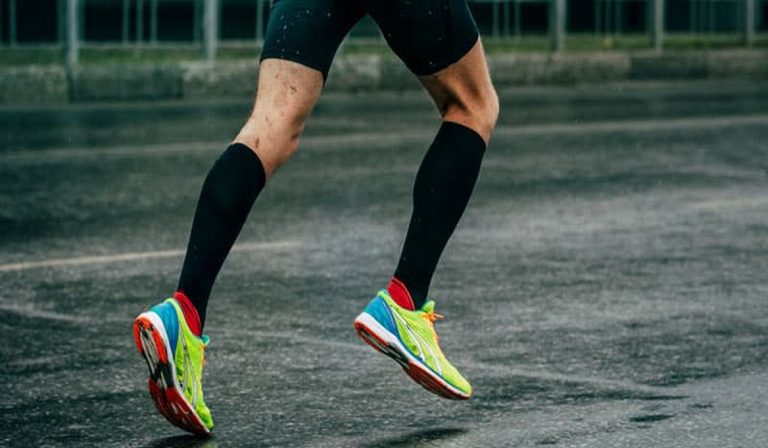10 Best Nike Shoes for Running on Concrete
Finding the best Nike shoes for running on concrete is essential for anyone who frequently hits the pavement. Concrete is one of the hardest surfaces to run on, and without proper footwear, it can take a serious toll on your joints, muscles, and overall performance.
Nike has long been a trusted brand in the running world, offering innovative designs, cushioning technology, and durability. This guide dives into the top 10 Nike running shoes that are specifically well-suited for concrete surfaces. We’ll explore the key features of each pair, their strengths and drawbacks, and help you decide which shoe best matches your needs and running style.
Top 10 Best Nike Shoes for Running on Concrete
1. Nike Air Zoom Pegasus 40
The Nike Air Zoom Pegasus 40 is a classic running shoe loved by both beginners and seasoned runners. Designed with React foam and dual Zoom Air units, it offers a plush ride ideal for hard concrete surfaces.
The updated upper brings better comfort and breathability, using engineered mesh that adapts to your foot’s shape. The midsole strikes a balance between softness and responsiveness, which helps reduce impact and improves efficiency.
Durability is a highlight here, with a waffle rubber outsole that grips pavement reliably. The Pegasus 40 is versatile enough for daily training, tempo runs, or even walking, making it an all-round concrete-friendly option.
Its roomy toe box and reliable fit make it a dependable shoe for long runs on unforgiving concrete paths.
Pros
- Responsive Zoom Air units
- Breathable engineered mesh upper
- Durable outsole for concrete grip
Cons
- May feel bulky for speedwork
- Break-in period needed for some
2. Nike ZoomX Invincible Run Flyknit 3
Built for maximum cushioning, the ZoomX Invincible Run Flyknit 3 is one of Nike’s most comfortable running shoes for concrete. It features full-length ZoomX foam for a soft and bouncy ride that absorbs repetitive pavement impact.
The wide base enhances stability, which is critical for runners needing extra support on hard surfaces. Its rocker geometry helps guide foot motion naturally, reducing stress on joints over long distances.
Flyknit upper delivers adaptive support and ventilation, wrapping your foot securely while staying lightweight. This shoe is ideal for recovery runs and long-distance outings where protection from concrete is crucial.
Its high-stack cushioning may not suit every runner, but those prioritizing shock absorption will find it an excellent match.
Pros
- Max cushioning with ZoomX foam
- Excellent shock absorption
- Stable, wide platform
Cons
- Less responsive for speed workouts
- High stack may feel unstable on uneven ground
3. Nike Air Zoom Structure 24
For runners seeking stability on concrete, the Air Zoom Structure 24 is a go-to option. It combines support and comfort with a modern design suited for overpronators.
This shoe uses a firmer foam on the medial side and a Zoom Air unit in the forefoot, creating a balance of cushioning and control. The result is a smooth, guided ride on tough concrete surfaces.
The mesh upper provides good ventilation and a secure midfoot lockdown. Heel cushioning adds to the overall comfort, making it ideal for long city runs or daily commutes.
Its structured feel ensures your stride stays aligned even during longer efforts, reducing fatigue and potential injuries.
Pros
- Great for overpronators
- Durable and supportive design
- Zoom Air cushioning in forefoot
Cons
- Heavier than neutral trainers
- Less flexible than minimalist models
4. Nike React Infinity Run Flyknit 3
The React Infinity Run Flyknit 3 is engineered for injury prevention and comfort, making it ideal for running on unforgiving surfaces like concrete. The React foam offers a soft yet resilient ride that reduces joint stress.
Its Flyknit upper is re-engineered for a more secure fit and improved breathability. A wider forefoot base improves stability and supports smoother transitions.
One of its standout features is the combination of soft cushioning with a stable ride, designed to help reduce injury rates. This makes it an ideal choice for high-mileage runners and beginners alike.
Though it may lack the speed of racier models, it delivers durability and safety when running on city streets.
Pros
- Injury-prevention design
- Balanced cushioning and support
- Breathable and secure upper
Cons
- Not suitable for race-day speeds
- Heel collar may feel high for some
5. Nike Zoom Fly 5
The Nike Zoom Fly 5 blends speed with comfort, offering a versatile option for concrete running. It features a full-length ZoomX core with a carbon-infused plate, ideal for faster runs without compromising comfort.
Its midsole cushioning absorbs impact efficiently, while the plate propels you forward with a springy toe-off. The upper is lightweight and breathable, offering a snug but flexible fit.
This model is built for runners who want to maintain pace on concrete but still protect their joints from harsh surfaces. The durable outsole supports mileage while keeping grip on dry urban terrain.
If you’re training for races or just like moving fast during your daily pavement run, the Zoom Fly 5 is a great pick.
Pros
- ZoomX cushioning with carbon-infused plate
- Lightweight upper design
- Responsive for speed runs on concrete
Cons
- Less cushioned than max-stack shoes
- May feel firm for long recovery runs
6. Nike Air Zoom Vomero 16
The Air Zoom Vomero 16 is one of Nike’s most plush running shoes, making it an excellent choice for long runs on concrete. It incorporates ZoomX foam in the midsole combined with a forefoot Zoom Air unit for a luxurious yet springy feel.
The shoe provides excellent impact protection, which helps reduce the strain on knees and hips over hard urban terrain. Its engineered mesh upper offers breathability and lockdown, while the padded collar adds comfort for extended sessions.
The outsole rubber pattern is optimized for traction and longevity on paved surfaces. It performs well for daily training and recovery runs where comfort is a top priority.
Though slightly heavier than other models, the Vomero 16 makes up for it with its smooth ride and superior cushioning.
Pros
- ZoomX foam for high energy return
- Great impact protection for concrete
- Durable outsole rubber
Cons
- Heavier than some other options
- Not ideal for tempo runs
7. Nike Wildhorse 8
Though designed for trails, the Nike Wildhorse 8 offers rugged comfort and is surprisingly efficient on concrete. Its React foam midsole provides cushioned support with a more grounded feel, which some runners prefer on pavement.
What makes the Wildhorse 8 stand out for concrete is its rock plate and full rubber outsole, which add to underfoot protection and durability. It handles rough concrete areas, urban parks, and mixed terrain with ease.
The upper is supportive with durable overlays, and the padded tongue enhances comfort on long runs. This shoe is perfect for runners who encounter a variety of surfaces, including stretches of hard pavement.
While it’s not the most responsive shoe, it provides protection and longevity for concrete runs with variable elements.
Pros
- Durable outsole and rock plate
- Stable and protective on concrete
- Supportive fit and upper durability
Cons
- Less responsive ride
- Heavier than road-specific shoes
8. Nike Air Zoom Alphafly NEXT% 2
The Alphafly NEXT% 2 is Nike’s premier race-day shoe, and while designed for speed, it’s incredibly effective on concrete. The shoe features a full-length carbon plate sandwiched between dual Zoom Air pods and ZoomX foam for explosive energy return.
Despite its performance-oriented build, the thick cushioning offers surprising protection on concrete. Its Atomknit upper provides a sock-like fit that’s ultra-light and breathable, ideal for fast-paced city runs.
It’s especially suitable for advanced runners who race on urban streets or want elite-level responsiveness for training. The outsole rubber zones deliver strategic grip, even on smooth concrete surfaces.
This is not a daily trainer, but for race-specific use on concrete, few shoes perform better in terms of speed and efficiency.
Pros
- Elite energy return with Zoom Air + ZoomX
- Great for racing on concrete
- Lightweight and breathable Atomknit
Cons
- Very expensive and niche use
- Not ideal for daily mileage
9. Nike Air Winflo 10
The Nike Air Winflo 10 offers value and comfort for runners seeking a reliable concrete-ready shoe. It features a combination of Cushlon foam and a forefoot Zoom Air unit, which offers a cushioned yet supportive feel.
Its upper is redesigned for better structure and support, with breathable mesh and a padded heel collar. The fit is accommodating, making it a great choice for wider feet or beginner runners.
This shoe is suitable for everything from short runs to moderate distances on concrete, offering durability without sacrificing comfort. The rubber outsole is designed for traction on roads and sidewalks.
For budget-conscious runners looking for Nike quality and concrete-ready cushioning, the Winflo 10 is an excellent option.
Pros
- Affordable with solid cushioning
- Zoom Air for impact absorption
- Good fit for wider feet
Cons
- Less premium feel than higher-end models
- Not for high-performance training
10. Nike Renew Ride 3
The Renew Ride 3 is built with everyday comfort in mind and performs surprisingly well on concrete paths. It features Renew foam, which provides soft cushioning ideal for reducing the harsh impact of urban running.
The overall construction emphasizes support, with a well-padded collar and secure lacing system. The breathable upper and roomy forefoot area make it comfortable even for extended wear.
This shoe is a solid choice for casual or beginner runners who stick to sidewalks and roads. It’s not built for speed, but it offers dependable traction and shock absorption where it matters most.
If you’re looking for a no-frills, comfortable ride on concrete, the Renew Ride 3 gets the job done efficiently and affordably.
Pros
- Soft Renew foam cushioning
- Great everyday comfort
- Breathable and supportive
Cons
- Not ideal for fast-paced runs
- Less energy return than ZoomX or React
| Product Name | Cushioning Type | Best For | Stability | Upper Material |
|---|---|---|---|---|
| Nike Air Zoom Pegasus 40 | React + Zoom Air | Daily training | Moderate | Engineered mesh |
| Nike ZoomX Invincible Run Flyknit 3 | ZoomX Foam | Max cushioning | High | Flyknit |
| Nike Air Zoom Structure 24 | Zoom Air + Supportive Foam | Stability running | High | Breathable mesh |
| Nike React Infinity Run Flyknit 3 | React Foam | Injury prevention | High | Flyknit |
| Nike Zoom Fly 5 | ZoomX + Carbon Plate | Tempo & speed runs | Moderate | Lightweight mesh |
| Nike Air Zoom Vomero 16 | ZoomX + Zoom Air | Long runs | Moderate | Engineered mesh |
| Nike Wildhorse 8 | React Foam + Rock Plate | Mixed terrain | High | Durable mesh |
| Nike Air Zoom Alphafly NEXT% 2 | ZoomX + Zoom Air + Carbon Plate | Racing | Moderate | Atomknit |
| Nike Air Winflo 10 | Cushlon + Zoom Air | Everyday running | Moderate | Engineered mesh |
| Nike Renew Ride 3 | Renew Foam | Casual running | Low | Breathable mesh |
Best Nike Shoes for Running on Concrete: Buying Guide
Cushioning Matters Most
When running on concrete, impact absorption is crucial. Nike’s ZoomX, React, and Cushlon foams are engineered to provide shock absorption and energy return, reducing stress on joints. Look for models that use dual cushioning systems, such as Zoom Air plus foam midsoles, to get the best protection and bounce.
Stability and Support
Running on hard surfaces can throw off your gait if your shoes lack structure. Stability shoes like the Nike Structure 24 or React Infinity Run are great choices if you overpronate or need a secure ride. Look for features such as a wider base, firm medial foam, or rock plates for extra support on uneven city surfaces.
Durability of the Outsole
Concrete wears out shoes faster than other terrains. Choose models with durable rubber outsoles that include waffle or crash-pad designs. Nike often reinforces high-wear zones on their shoes, which can extend the life of your investment significantly.
Breathability and Fit
Hot pavement and long runs can cause foot discomfort. Breathable uppers like Flyknit or engineered mesh help with ventilation and moisture control. Fit also matters look for heel collars and lacing systems that secure the foot without being restrictive.
Weight and Responsiveness
If speed is a factor, lightweight shoes with carbon or nylon plates like the Zoom Fly 5 or Alphafly NEXT% 2 can make a big difference. These shoes balance cushioning and speed, ideal for runners training on concrete for races. For daily use, slightly heavier shoes with more padding may be better suited.
Running Goals and Style
Choose your shoe based on your training goals recovery runs, racing, or high-mileage training. Nike offers models that cater to all types of runners. Some shoes, like the Pegasus 40, are extremely versatile and can adapt to most concrete-based workouts.
FAQ
Are Nike shoes good for running on concrete?
Yes, Nike offers a wide range of shoes designed specifically to absorb shock and provide stability on hard surfaces like concrete. Models with ZoomX or React foam are particularly well-suited for this purpose, giving runners a mix of cushioning and responsiveness.
Which Nike cushioning is best for concrete surfaces?
ZoomX is Nike’s most advanced foam and offers the highest energy return and cushioning, making it excellent for concrete. React foam is also a popular option for a slightly firmer, yet comfortable ride with excellent durability.
How often should I replace Nike running shoes used on concrete?
Running on concrete wears shoes out faster than softer surfaces. It’s recommended to replace your running shoes every 300–400 miles, but if you notice discomfort or reduced cushioning, you may need to replace them sooner.
Can I use trail Nike shoes for running on concrete?
Some Nike trail shoes like the Wildhorse 8 have durable outsoles and stable midsoles that handle concrete well. However, they are heavier and not optimized for pavement speed. Use trail shoes on concrete only if your routes are mixed terrain.
What’s the difference between Nike’s daily trainers and race shoes for concrete?
Daily trainers like the Pegasus or Infinity Run prioritize comfort, durability, and support, making them better for everyday runs. Race shoes like the Alphafly or Zoom Fly are lighter, more responsive, and built for performance, but may wear out quicker.
Should I size up in Nike running shoes?
Most Nike running shoes run true to size, but if you have wide feet or plan to run long distances, sizing up half a size can help with swelling and comfort. Trying them on with your running socks is the best way to ensure a proper fit.
Verdict
Running on concrete demands shoes that prioritize cushioning, support, and durability. Nike’s lineup covers every need from recovery runs to race days. Choose a model that aligns with your goals, and you’ll experience better comfort and performance with every stride on the pavement.







